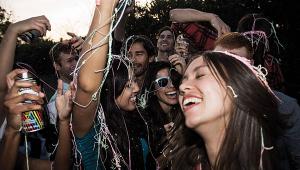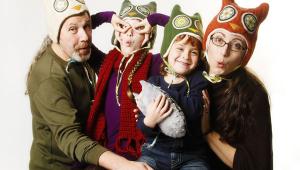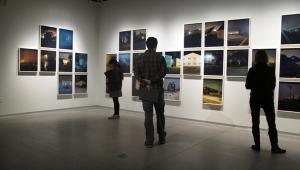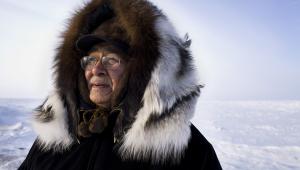Business Trends
Making Money As A Photographer And Writer
| I am always asked these same questions in my self-promotion seminars. Why is there a long-standing prejudice against hiring a photographer who is also the writer of the story? Is digital capture expected now for the photojournalist? How do you handle the difficult issue of editorial photography being at the lowest end of pricing for photo assignments? For some answers, I turned to Frank Van Riper, author of Talking Photography (Allworth Press, www.allworth.com), professional photographer and photography columnist for www.washingtonpost.com. Van Riper is a photographer and journalist who has been Washington Bureau News Editor of the New York Daily News and an award-winning White House correspondent. He is also the author of Glenn the Astronaut Who Would be President, a political biography, and Faces of the Eastern Shore and Down East Maine, both highly praised illustrated books. Van Riper lives in Washington, DC, and is currently represented by the Touchstone Gallery. Shutterbug: How do you explain the resistance by clients to hire a photographer who is also the writer of the story? Frank Van Riper: The taboo against photographers/writers is rooted in tradition. On newspapers especially, producing what amounts to a small novel every day requires a huge division of labor. It simply would not work for a photographer on deadline to also write the story, or vice-versa. And frankly, the individual who could do both would be unusual. So the tradition developed that the photographer was the mute recorder of images while the writer was the more voluble provider of words. Unfortunately this led to the inaccurate notion that "mute" often meant not as bright. "The text people always thought they were much smarter," my friend and colleague photojournalist Dirck Halstead said recently. SB: So how does a photographer who can really write and wants to write and shoot plan their self-promotion? VR: Don't give an editor the chance to turn you down because you are a photographer first and a writer second. I suggest coupling a brief story proposal, not only with your great pictures, but also with a lengthy writing sample, perhaps even a first draft of the entire article you want to do. Smaller circulation niche magazines are often on the lookout for words and pictures together. Are you a dog or cat fancier? Coin collector? Gardener? Turn your hobby into something to record in pictures and words. You'll be ahead of the game because you'll be working with a subject you already know. Always remember magazines and newspapers have to fill their pages every month, every week, every day, and good writing can only enhance good photography. Give an editor the opportunity to do one-stop shopping. SB: How do you feel about digital capture and the photographer/writer? VR: My biggest beef with digital is in the area of retrieval and archiving, areas that do not really affect the average amateur or a pro just starting out. It does mean having to spend big bucks every few years to transfer everything you shoot onto a new medium to keep it retrievable. Photographers, in journalism especially, have the tendency to save only those pictures that seem important now while zapping everything else. This is potentially a huge loss to future generations of journalists, historians, and others. In my work, I love having the digital option, but I almost never shoot it exclusively. At events, we always shoot film predominantly, but I'll make some digital images (for example, Laura Bush, Vice President Cheney, and Don Rumsfeld at a recent Hoover Institution meeting) so that clients can post key pictures immediately onto their web sites. SB: I find many photographers looking for direction in their career. How did you find your niche? VR: A niche takes time. Sooner or later, though, you will want to choose the kind of photographer you are, or want to be, and will concentrate on that preference, sometimes to the exclusion of other types of shooting. Consider your last vacation, or the last time you went shooting. What events or things you saw compelled you to make a picture? Was the sunset fantastic? Did the architecture ring your chimes? Were the faces you saw what made you want to shoot? Did you encounter an event or occurrence that made you want to record it all? The above probably appealed at one time or another to people who became landscape photographers, architectural photographers, portraitists, or photojournalists, to name only a few. As an ex-newspaper reporter, my photographic preference was for people, shot mostly in black and white in a journalistic style. Though it's no sin to blend various disciplines together, it is counterproductive to try to be all things to all people. This is a common problem with people just starting out and anxious to make their mark or, more important, enough money to pay the rent. In the long run developing a skill that you love and for which you can become known, is the better, more satisfying and ultimately more lucrative road to take. SB: Because shooting editorial work is at the low end of the pay scale, many photographers don't know how to deal with this problem. What are your thoughts? VR: The problem is that, to many of us, editorial work is simply the best job in the world: the proverbial front row seat to history. I myself have said I would have paid the New York Daily News for my 20 years there as a reporter; it was that much fun. In one sense, though, a young single person probably should not obsess on money, but rather, on access, getting a foot in the door, and making one's mark through hard work and enthusiasm. As the energetic AP shooter Susan Walsh says, "If you get assigned to shoot The Pet of the Week, make it the best Pet of the Week picture they've ever had." Worry about money after you've landed a staff job with even a paltry paycheck. Then you either can try to parlay that job into a better one, or use that job as a springboard to free-lance work that can make you better known. On the Daily News I made it from editorial trainee in New York to junior reporter in the Washington Bureau in an incredible five months because I worked my butt off, making sure everyone in the city room, from features to sports, knew my work and me. That recognition won me a tryout in Washington, where I stayed for 20 years. One more thing about money--one of the biggest pitfalls for new photographers is under pricing; either out of fear that no one will pay what they'd like to charge or, worse, out of the misguided notion that undercutting the competition will bring them work. Low-balling a job (cutting your price to get an assignment) is a no-win strategy. Aside from generating enmity among your colleagues, it can lock you into a defeatist mindset that your work is not worth a fair return. In setting your pricing remember that a client is paying for your skill, not just for your expenses. That skill and the ability to make images a client will either treasure personally or use to make money for his or her own business is a valuable commodity. Don't sell it, or yourself, short. SB: What has been your most memorable piece of photography and writing? VR: I wrote an essay on the death of our golden retriever, with tears in my eyes and in one take. In one sense it was closure for my wife and I. In another, it was a textbook example of "writing what you know." What I didn't know at the time was that this column, which ran in the "Weekend" section of the Washington Post in August of 1994, would trigger one of the greatest outpourings of mail I've ever had, either as a reporter or photographer. It is one of the great conceits of any artist that everything he or she does is interesting to others. Of course this can be incredibly egotistical, but it also reflects the fact that successful writers, photographers, painters, sculptors, dancers, and all artists deal in universal themes that resonate with all people. That's why writing and photographing from a personal "home base" can be successful and rewarding, once you overcome the basic threshold of shyness. Speaking of shyness, people often ask me how I get such "intimate" images of people (lost in prayer at a tent revival meeting, for example). In virtually all cases, I ask permission beforehand, either formally or with something as simple as a gesture toward my camera and a sympathetic questioning raised eyebrow. Most people are flattered that you think they are interesting enough to photograph. And once you are viewed as a non-threatening presence, something magical happens: you disappear and can then make some truly wonderful pictures. |















































